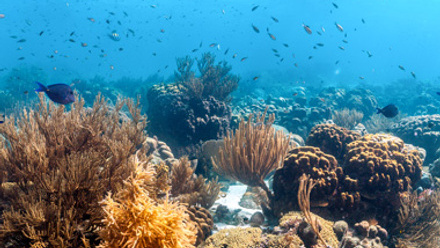Climate Change and Chemical Contamination: From Combined Effect Studies to Environmental Risk Modeling
Chantal van Drimmelen, Hamburg University of Applied Science; Jannicke Moe, Norwegian Institute for Water Research; Steffen Keiter, Örebro University; Andrew John, University of Melbourne
SETAC Europe 2024 was a great experience, with the pleasant weather probably contributing. However, recent summer heatwaves in Seville have frequently exceeded 40°C and even reached up to 50°C, which underlines the pertinence of the topics presented in this session. Previous SETAC sessions on climate change have demonstrated increasing understanding of combined effects of climate and chemical stressors, but also identified major research needs, including those regarding the impacts on community and ecosystem levels. Nevertheless, frameworks for environmental risk assessment (ERA) of chemicals need to adapt to projected climate change, as emphasized by a SETAC Pellston workshop in 2022. The focus of this session was therefore twofold: to present recent progress both in understanding of combined climate and chemical stress on ecosystems, and in development of ERA methodology for better integration of climate model projections and climate-related uncertainty.
This session provided a forum for international experts from all career stages through four platform presentations and 18 posters, including three poster spotlights. The posters represented a range of study approaches such as different environmental test systems (e.g., freshwater, marine, sediments); combined effects on individual organisms (e.g., water fleas, rotifers, copepods, fungi); effects on communities and ecosystem processes; and climate considerations in risk modeling.
Two platform presentations reported on advanced experimental studies to disentangle climate and chemical stressor effects at different levels of biological organization. Paul van den Brink, Wageningen University, presented experimental studies of temperature and pesticide interactions at the individual, population, community and ecosystem levels, supported by modeling to improve the understanding of the stressor interactions at higher levels. Andreu Rico, University of Valencia, explored the exposure of zooplankton to heat waves and pesticide peaks in different orders, and discovered that the timing of stressors had long-term effects on population and community processes such as recovery. Combined effects of temperature stress and pesticides on decomposition rates were reported in a poster spotlight by Verena Schreiner, University of Kaiserlautern-Landau, who discussed how mesocosm studies can give unexpected outcomes and new insights compared with controlled laboratory studies.
The two last platform presentations addressed the adaptation of risk assessment approaches to climate change. Rik Oldenkamp, Vrije University Amsterdam, considered chemical runoff from roads following droughts and flush events, and developed risk maps for salmonid species under different climate scenarios using an ensemble of global climate models. Representatives for the metal industry, Elisabeth Middleton, NiPERA Inc., and Eric Van Genderen, International Zinc Association, highlighted the needs for changes in the ERA paradigm for metals, accounting for specificities such as essentiality, speciation, partitioning and bioavailability. The poster spotlight by Andrew John, Melbourne University, demonstrated how attempts to understand system sensitivity to environmental change (“bottom-up approaches”) more generally can give more robust adaptations of ERA to climate change. Finally, highlights from the recent Pellston workshop on climate change and ERA were presented by Jannicke Moe, Norwegian Institute for Water Research, focusing on the need for probabilistic risk approaches and collaboration with climate scientists to co-develop robust and relevant climate information.
Since the first SETAC Pellston workshop on climate change and ecotoxicology in 2011, significant advancements have been made both in climate modeling and in innovative experimental set-ups. This session has highlighted the importance of diverse experimental and modeling methods, and the need for increased integration between the practical and theoretical approaches for better understanding of both cause-effect relationships and uncertainties. We hope to continue this scientific discussion at SETAC Europe in Vienna next year, and to see more examples of multi-stressor situations including extreme events, with effects on different levels of biological organization in different ecosystem types.
If you have any questions, please feel free to reach out to us!
Author's contact: [email protected]



